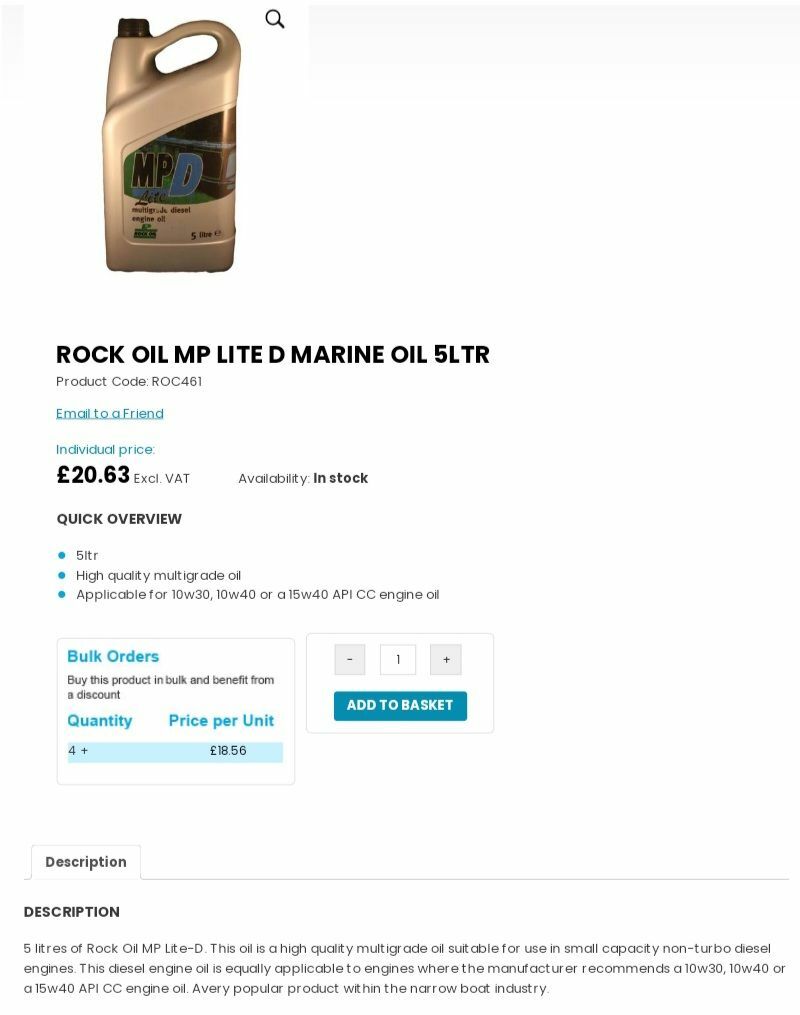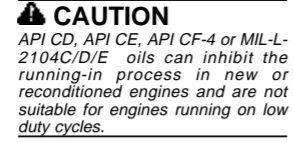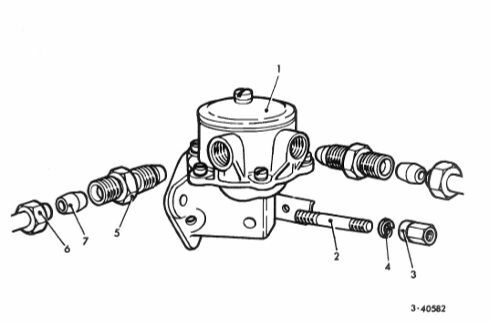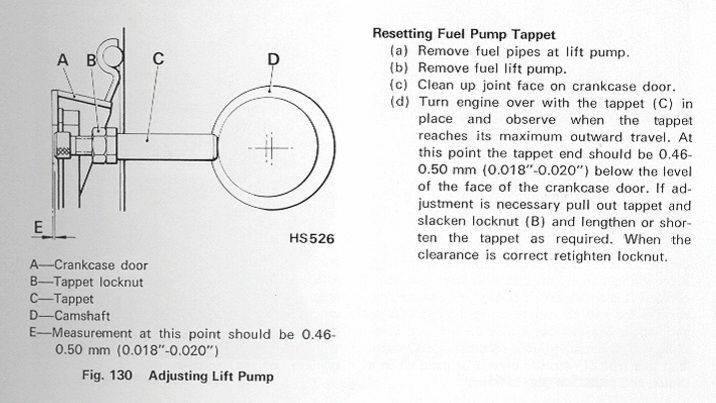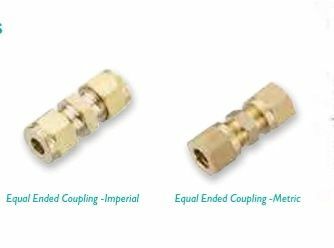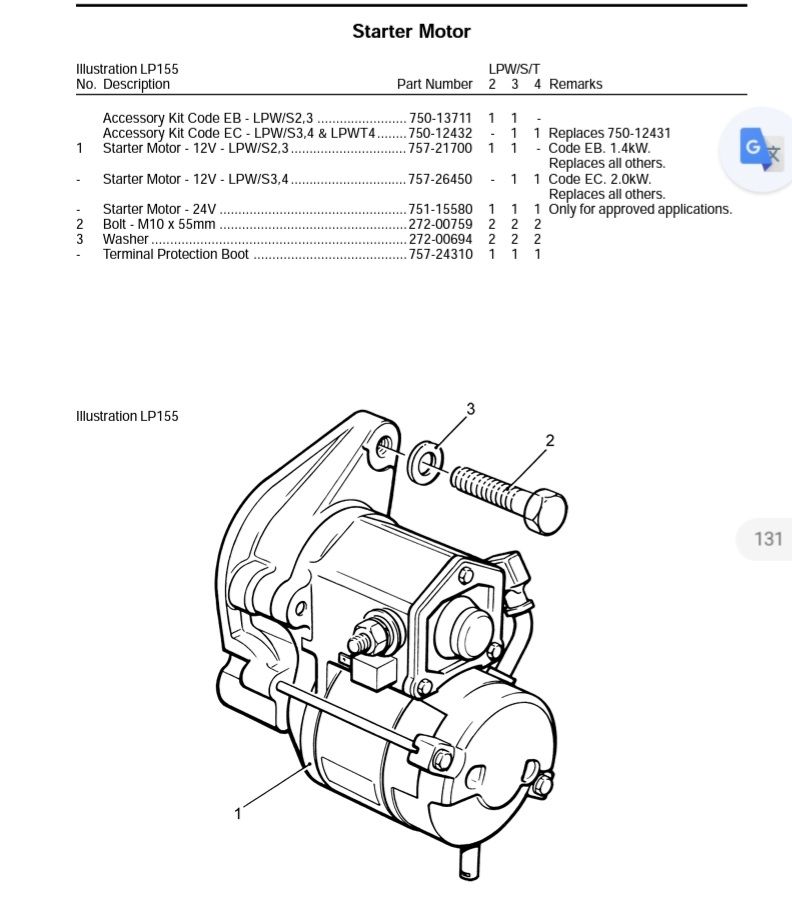-
Posts
360 -
Joined
-
Last visited
Content Type
Profiles
Forums
Events
Gallery
Blogs
Store
Everything posted by Steve56
-

Lister petter Lpws3 exhaust spitting/ leak
Steve56 replied to Tgno3's topic in Boat Building & Maintenance
It would certainly seem that way. On the Alpha range of engines the oil feed to the rockers is up through the centre of the hollow push rods, then draining back down the pushrod tubes themselves. With tubes being totally independent of the head gasket. -

Lister petter Lpws3 exhaust spitting/ leak
Steve56 replied to Tgno3's topic in Boat Building & Maintenance
One thing to bear in mind when talking about oilways and head gaskets on the Alpha engines is that there are no oil ways in the block or head. -

Lister petter Lpws3 exhaust spitting/ leak
Steve56 replied to Tgno3's topic in Boat Building & Maintenance
It always seems to get a good debate going when oils are mentioned. If I was running an Alpha engine (except the turbo model) in a boat this is the oil I would be using. -

Lister petter Lpws3 exhaust spitting/ leak
Steve56 replied to Tgno3's topic in Boat Building & Maintenance
The 3 cylinder engine was the worst one for vibration issues. The modified engine bearers were only ever available for that model. The 2&4 cylinder models just stuck with the standard feet. -

Lister petter Lpws3 exhaust spitting/ leak
Steve56 replied to Tgno3's topic in Boat Building & Maintenance
Can't really explain that. There does seem to be a lot of contradictions over the years and also over different publications of the manuals. I am just giving an opinion of how things were when I was employed first as an R&D engineer and then service engineer with the company. That was back in the day when Lister Petter owned the company and when most of the engines we are talking about were manufactured. Since then the company has had many owners, with most parts being made abroad so really not in a position to talk about these latterly built engines. -

Lister petter Lpws3 exhaust spitting/ leak
Steve56 replied to Tgno3's topic in Boat Building & Maintenance
-

Lister petter Lpws3 exhaust spitting/ leak
Steve56 replied to Tgno3's topic in Boat Building & Maintenance
As you say Tony there are various manuals dependant on if you are using the engine for industrial use, normally high loads or marine use. Even with marine use the engine could be in a sea going vessel and again running at high load. The problem always was that in a narrowboat the engines never ran much above idle speed which is what caused the problems. Another problem is that people put a modern diesel engine into a narrow boat and then try to get them to run as slow as possible. Maybe to try and get back to the days of the old slow speed diesels. But a modern engine was never designed for this sort of work. So always a compromise. From experience as a Lister engineer the best way forward was to use a relatively low spec oil to ensure bore glazing wasn't a problem. -

Lister petter Lpws3 exhaust spitting/ leak
Steve56 replied to Tgno3's topic in Boat Building & Maintenance
The 3 cylinder engine suffered badly with vibration issues. The mod you show in your photos was something I came up with when working as an R & D engineer at Lister Petter. It did make an improvement to the way the engine ran. -

Lister petter Lpws3 exhaust spitting/ leak
Steve56 replied to Tgno3's topic in Boat Building & Maintenance
Make sure the oil is API CC. Should say on the can. If not sure just post what it says and I'm sure someone will advise. -

Lister petter Lpws3 exhaust spitting/ leak
Steve56 replied to Tgno3's topic in Boat Building & Maintenance
The other issue with these engines was bore glazing. It was a common fault if running under light load and using a high spec oil. Ideally you should be using an API CC oil. If that is the case you may be able to clear it by ensuring the correct spec oil then run in gear at full speed. Keep an eye on temperatures as your cooling system may not be man enough to cope. And yes I do know that CRT say you shouldn't do this. -

Lister petter Lpws3 exhaust spitting/ leak
Steve56 replied to Tgno3's topic in Boat Building & Maintenance
Those tanks were always a weak point. Would tend to part from the engine after a bit of vibration. Best thing to do, as you have done is to replace with a remote tank. -

Lister petter Lpws3 exhaust spitting/ leak
Steve56 replied to Tgno3's topic in Boat Building & Maintenance
You are quite right in saying that this range of engines uses hydraulic valve lifters. I've worked on a number of these in the past that have been damaged by lack of maintenance. If the oil is not changed regularly it will cause the lifters to jack open and the valves to hit the piston. In my opinion one of the big problems with this range of the engine was that with the old Listers you could get away with a lot of abuse and lack of maintenance and they would just keep going. A lot of people thought they could do the same with this model but found out they couldn't. The Alpha range of engines are good reliable engines but must be maintained correctly. -
Sounds like a faulty connection somewhere. If you have voltage in the battery, which you must have done to start engine then as soon as you turn ignition on the voltmeter should give a reading. This would happen regardless of whether the alternator was charging or not.
-
They are the small bore oil pipes which feed the rocker bushes.
-
There should only be one of these used in the pipe fitting. It is basically doing the same job as an olive. The pipe is pushed through the threaded fitting, the rubber seal is slid onto the pipe then everything is assembled into the fitting.
-
Yes if I remember correctly they are done this way so they can get cool air. It will either end up at a louvred panel at the back of the housing or possibly go into a plenum chamber. Either way you will need to take housing appart to get good access.
-
The AVR is no 14 on the diagram. You will need to remove the plastic end cover to access it. Normally they have a small potentiometer on them to allow for voltage adjustment. Firstly though you will need to ensure engine speed is correct and alternator is giving around 52 Hz off load.
-
One other comment after taking a closer look at the photos. From what I can make out your pre filter is mounted to one side of the engine, but not fitted to it. You then have a short length of solid copper pipe which runs from the filter to the lift pump. If that is the case this length of pipe should be a flex pipe and not solid. This is to allow for engine vibration. Again if this is the case it could certainly cause the leaks in the pipework.
-
Here's a diagram of what would of of originally been fitted. As you can see the fitting had a male cone on it, which would form a seal in the pump. All pipework would originally have been 5/16" which is still readily available. If you need any of these fittings or any other parts then it may be worth talking to Marine Engine Services (Midlands) who I'm sure can give good advice.
-
Yes the SL engines were all imperial and used mostly AF. There are a few exceptions such as some of the fuel and oil unions which would be BSF/Whit sizes
-
-
Interesting that he has a mix and match of imperial and metric fittings, or it certainly looks that way. I know people try to do this but it is bad practice and never really successful.
-
Many years ago I installed a Taylors heater on an old boat of mine. I supplied the fuel from the main fuel tank that was at a lower level than the heater. All I used was an electric in line pump. Not the SU type but the modern electronic type. The sort of thing which is available quite cheaply from somewhere like ASAP Supplies. It worked well and never gave a problem. This type of pump runs continuously and give a constant pressure. Not sure of the power consumption but probably very low.
-
This is the starter your looking for along with the Lister pt no. It is possible dependant on age of engine that you may have the Lucas starter fitted. If that's the case they are now obsolete but fully interchangeable with the starter shown in attachment.


